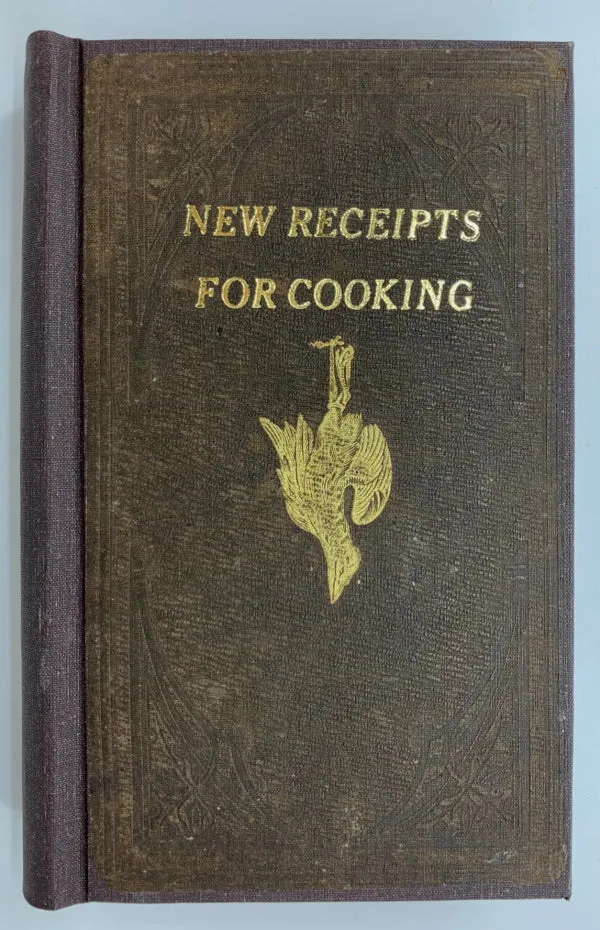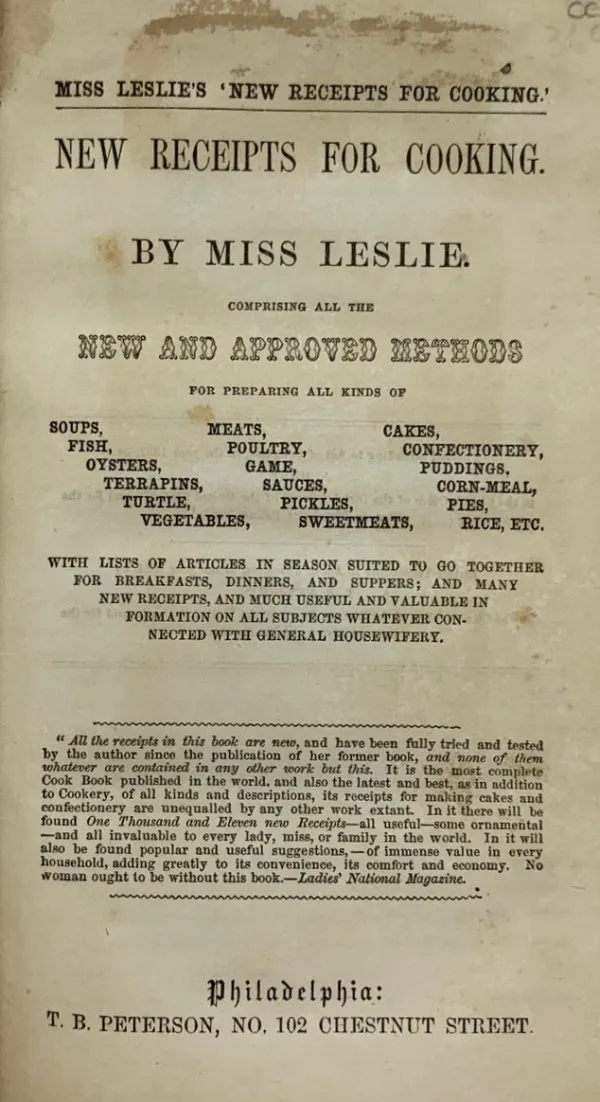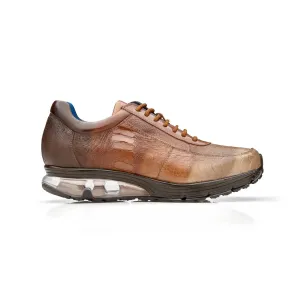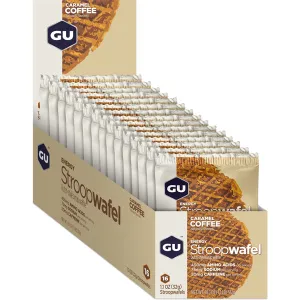Philadelphia: T. B. Peterson, 1854. Hardcover. Very Good. Rebacked.
A prominent figure in the development of the American kitchen, Eliza Leslie (1787–1858) preserved for us a breed of cookery that helped the country depart from its heavily English roots and begin to achieve a character of its own. In this book (1854), one of her last, she draws on regional ingredients and flavors, particularly Southern, and incorporates some of the sophistication of French cooking technique, offering ideas intended to satisfy not only the need for simple home meals but also the more elegant offerings associated with entertaining.
“Miss Leslie,” as she styled herself, had published numerous cookery and household titles going as far back as 1828. She is quite insistent in her preface to this book that it contains all fresh material and includes a testimonial from Ladies’ National Magazine on the title page that emphatically states, “All the receipts in this book are new, and have been fully tried and tested by the author…none of them whatever are contained in any other work but this,” [their italics].
However, New Receipts for Cooking is in fact an expanded version of her 1847 work titled The Lady’s Receipt Book, the majority of the work presented in exactly the same way, seemingly from the same plates. Especially interesting is that one piece of material added for this volume is a forty-page section on using cornmeal and on related “Indian baking.” This is also apparently a re-use of a brief earlier publication, The Indian Meal Book (1847). The only addition to the original Lady’s Receipt Book appears to be this section and one titled “additional recipes” just before it. Rather than have those incorporated into the existing index, the publisher simply included another index for the added recipes.
As with most receipt books of the period, this is also a household manual with hundreds of tips and hints: To Make Shoes or Boots Waterproof (mutton fat); Good Tooth Powder (containing Dutch Pink, which is “intended to impart a pale reddish color”); To Destroy Caterpillars (quick- lime, salt, powdered sulfur, and snuff). Despite the 19th century bamboozle, quite captivating material.
The interior of this copy is Very Good—printed on high-quality paper stock and still crisp—with discoloration beginning around the edges. A few stains and stray pencil marks appear throughout. A previous owner’s name is neatly penciled on the preface page. The volume had become disbound at some point, and the original case quite badly damaged, so it has been given a serviceable binding in dark brown, with the original front and rear covers laid on and the title stamped anew.

 Cart(
Cart(











